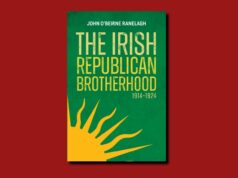
An Meisias Deireanach
Peter Wessel Zapffe|Tomás Mac Síomóin a d’aistrigh|Coiscéim|Lth/Pgs 63
ISBN 66600120200276
In the 1970s Tomás Mac Síomóin’s first poetry collection, Damhna, established him as an important voice in Irish language literature; three further collections over the years cemented his reputation, most recently with 21 Dán/Poemes/Poemas (2011).
His university background was in science and he holds a Ph.D from Cornell University in the USA. He lectured in biological sciences in Ireland and abroad before he decided to become a full-time Irish language writer in the mid-1980s. He was editor of the weekly newspaper Anois and later the monthly magazine Comhar before he left Ireland permanently in 1998.
As a creative writer, Mac Síomóin’s energies have largely been directed towards prose writing and include the short story collection Cín Lae Seangáin agus Scéalta Eile and several novels: Ag Altóir an Diabhail (2003); In Inmhe (2004); An Tionscadal (2006), Ceallaigh (2009) and An bhfuil Stacey ag Iompair? (2011). Much of his work satirises contemporary society and its failings by setting narratives in bizarre times and situations that allow him to say much about the world we live in.
His non-fiction writings on cultural and social issues come from a socialist perspective and this is reflected in some of his translations into Irish from Spanish and Catalan, which include the work of Ernesto Cardenal, Juan Rulfo and Victor Mora. Mac Síomóin has been self-exiled beyond the Anglosphere in Catalonia for more than twenty years, where he has made imaginative efforts to create a readership for writing in Irish, including graphic novels and books aimed at a younger readership. He has also published English translations of the poetry of his friend Máirtín Ó Direain (Selected Poems/Tacar Dánta in 1994, with Douglas Sealy), and has brought some of Liam Ó Flaithearta’s work in English back into print.
His latest work, An Meisias Deireanach, is a translation and examination of an essay by the twentieth century Norwegian philosopher Peter Wendell Zapffe. As well as Mac Síomóin’s own meditations on the importance of Zapffe’s philosophy and what it might have to say about the looming environmental apocalypse, Roar Madsen pens a short biography of his philosopher friend to give his work added context.
Reading philosophy is not something I regularly do but I decided to give the sixty or so pages of An Meisias Deireanach a go. The original essay by Zapffe is fewer than twenty pages long but inspires Mac Síomóin’s translation and short essays, which point out the importance of Zapffe’s thinking. His philosophy is dark and hopeless; he suggests that the planet would be better off without human life and that humans would be better off without consciousness. Human life has caused huge damage to our world and is a threat to the existence of the planet. Better that we had never been born, better for the planet if we ceased to exist as a species before we further damage it.
That’s an over-simplification of Zapffe’s philosophy and a reading of his and Mac Síomóin’s essays gives a more nuanced meaning and analysis. The introduction claims that it is better to accept this stark view of the human condition than to publish literary gems about the beauty and nobility of life’s lonely tragedy (an unusual view from a prolific and life-long writer like Mac Síomóin). According to Zapffe, the central problems stem from human consciousness, an evolutionary mistake, and what that has led to. He believed that humans limit their consciousness artificially so as not to to confront unpleasant realities and so hiding knowledge of our true selves from ourselves.
While animals live to do three things: survive, procreate and die, humans want much more: that is our central tragedy. Our consciousness lets us create dreams, fables and social mechanisms to distract a full examination of our existence and certain death.
He proposes that to shield ourselves from fear of death we have created four main mechanisms against existential panic: isolation, anchoring, distraction and sublimation. The examination of these was, for me, the most interesting part of his thesis. The result of that is that civilisation has been polluted by too much greed, materialism and search for unattainable gratification.
Mac Síomóin follows Zapffe’s essay with his own reflections on ecological disaster. He begins with the twelfth century St Malachy and his prophesy that the 112th pope (Francis) would be the last before the destruction of Rome and the final judgement! Mac Síomóin returns to his background as a scientist by quoting computer modelled predictions that civilised life will end between 2040 and 2050; he backs that with reports of the worsening climate crisis and looming ecological disaster, not forgetting the constant threat of nuclear Armageddon.
The final chapter gives an excellent and clear summary of the main historical and economic developments which brought us to the challenges we face today. Although the author sees programmes for sustainable development as providing some hope, the outlook remains grim as we continue and to destroy our world. Peter Wessel Zapffe’s philosophy as presented by Tomás Mac Síomóin in An Meisias Deireannach is bleak but worth attention nonetheless.
Cathal Póirtéir is a writer and broadcaster who has published several books and CDs on Irish folklore, social history and literature in Irish.











